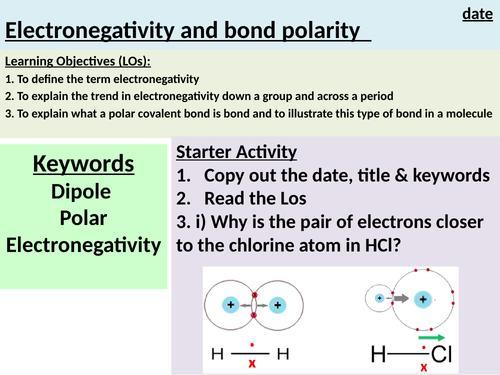

A structured KS5 lesson including starter activity, AfL work tasks and main work task all with answers on Electronegativity and Bond Polarity
By the end of this lesson KS5 students should be able to:
- To define the term electronegativity
- To explain the trend in electronegativity down a group and across a period
- To explain what a polar covalent bond is bond and to illustrate this type of bond in a molecule
Declaimer: Please refrain from purchasing this popular resource for an interview lesson or a formal observation. This is because planning your own lessons including using your own lesson PowerPoints is a fundamental skill of a qualified/unqualified teacher that will be reviewed during these scenarios outlined above
Something went wrong, please try again later.
Not bad but not worth the money IMO
Report this resourceto let us know if it violates our terms and conditions.
Our customer service team will review your report and will be in touch.
£7.47